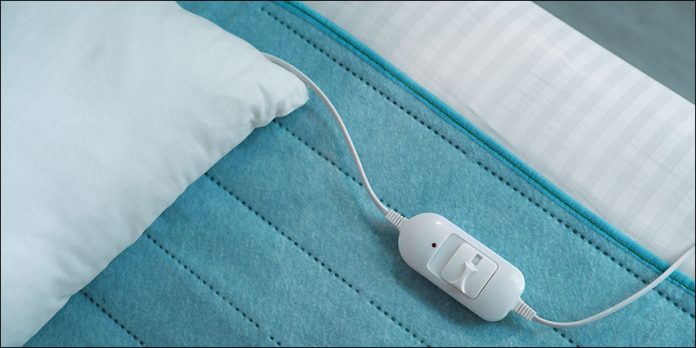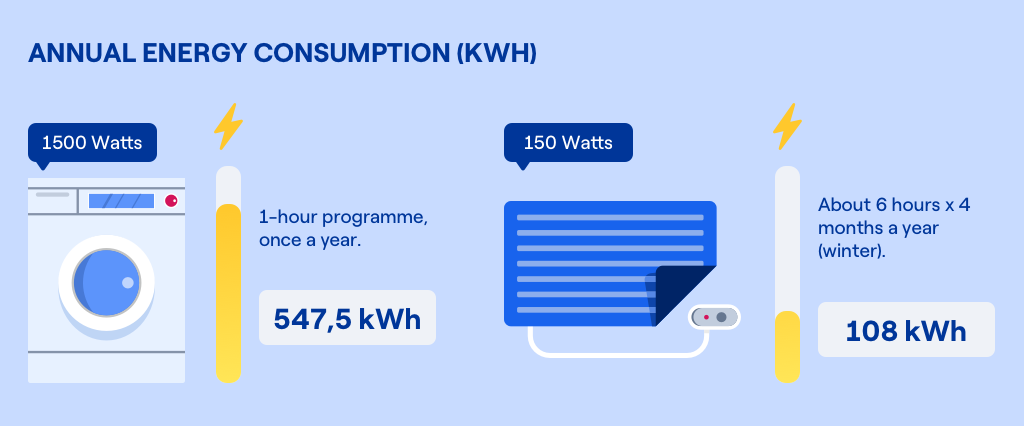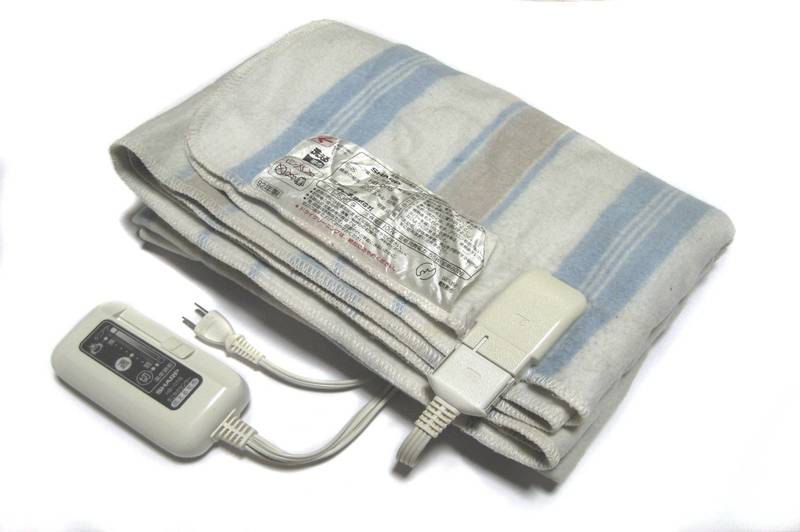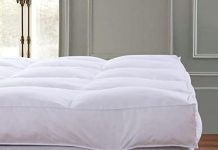Curling up in a cozy blanket during cold winter nights is a comforting luxury. But have you ever wondered how electric blankets work their magic in keeping us remarkably warm? In this article, we will unveil the inner workings of these marvelous creations, exploring the technology behind how electric blankets generate and distribute heat. From special heating elements to temperature controls, prepare to be astonished as we unravel the mystery behind these toasty treasures.
Review contents
Electric Blanket Basics
Electric blankets are a great way to stay cozy and warm during cold winter nights. With their built-in heating elements, they provide a constant source of heat that can be adjusted to your desired temperature. In this article, we will discuss the construction, heating mechanism, safety features, benefits, and maintenance of electric blankets. Additionally, we will address common concerns, alternatives to electric blankets, historical background, and usage tips and precautions.
Construction of Electric Blankets
Electric blankets are designed with comfort and safety in mind. They typically consist of a soft outer fabric layer, insulation to retain heat, and an inner lining to house the heating elements. The construction of electric blankets ensures even heat distribution throughout the blanket, providing maximum warmth.
Filling and Insulation
To enhance the heating capabilities of electric blankets, they are filled with materials that help retain heat. Insulation is commonly used to trap air and prevent heat loss. The filling and insulation play a crucial role in maintaining a consistent and comfortable temperature while using an electric blanket.
Control Unit and Wiring
The control unit of an electric blanket is an essential component that allows users to adjust the temperature according to their preferences. This unit typically includes a control panel with various temperature settings, an on/off switch, and a timer. The wiring inside the blanket connects the control unit to the heating elements, ensuring a safe and efficient transfer of electrical current.
Heating Mechanism
Heating Elements
The heating elements are the heart of an electric blanket. They are usually thin, flexible wires or carbon fibers that are evenly distributed throughout the blanket. When the electric blanket is switched on, electrical current flows through these heating elements, converting electrical energy into heat. The heating elements warm up quickly, providing immediate comfort and warmth.
Thermal Regulation
Electric blankets are equipped with thermal regulation mechanisms to maintain a consistent temperature. Temperature sensors are embedded within the blanket to monitor the heat level. When the desired temperature is reached, the heating elements automatically adjust their output to prevent overheating. This ensures a safe and comfortable experience while using an electric blanket.
Temperature Settings
Electric blankets offer a range of temperature settings to cater to individual preferences. These settings allow users to choose the level of warmth that is most comfortable for them. Whether you prefer a gentle warmth or a toasty heat, electric blankets provide a customizable heating experience for a good night’s sleep.
This image is property of www.endesa.com.
Safety Features
Automatic Shut-Off
One of the key safety features of electric blankets is the automatic shut-off function. This feature is designed to prevent overheating and potential fire hazards. After a certain period of use, the blanket automatically turns off to ensure that it does not continue to generate heat excessively. This feature provides peace of mind and safety, especially if you accidentally leave the blanket on for an extended period.
Overheating Protection
Electric blankets come with built-in overheating protection mechanisms that monitor the temperature continuously. If the temperature rises above a safe threshold, the blanket automatically reduces or shuts off the heat output. This protection feature ensures that the blanket does not reach dangerously high temperatures and minimizes the risk of burns or damage to the blanket.
Waterproofing
To ensure safety and functionality, many electric blankets are designed with waterproofing features. This prevents any liquids, such as spills or bodily fluids, from seeping into the blanket and causing electrical hazards. Waterproofing keeps the electrical components protected and extends the lifespan of the blanket.
Benefits of Electric Blankets
Enhanced Comfort
The primary benefit of electric blankets is the enhanced comfort they provide. By pre-heating your bed or snuggling under a warm blanket, you can create a cozy and inviting environment. The controlled heat allows you to create the perfect sleeping or resting temperature, providing a comfortable experience throughout the night.
Energy Efficiency
Electric blankets are energy-efficient compared to traditional heating methods. Instead of heating an entire room, electric blankets focus on keeping you warm directly. This targeted approach reduces energy consumption and saves on heating bills. With an electric blanket, you can enjoy warmth where you need it most without wasting energy.
Pain Relief
Electric blankets can offer localized relief for muscle aches and pains. The gentle heat can help soothe sore muscles, promote relaxation, and alleviate discomfort. Using an electric blanket with adjustable temperature settings allows you to customize the heat level to cater to your specific pain relief needs.
This image is property of www.energyaustralia.com.au.
Choosing an Electric Blanket
Size and Fit
When choosing an electric blanket, it is essential to consider the size and fit. Electric blankets come in various sizes to accommodate different bed sizes, including twin, full, queen, and king. Ensure that the blanket you choose fits your bed properly to enjoy its full benefits and maintain an even distribution of warmth.
Material and Construction
The material and construction of the electric blanket determine its durability, softness, and heat retention capabilities. Look for blankets made with high-quality, hypoallergenic materials that are easy to clean. Additionally, check for extra features such as double-sided heating or dual control options for couples with different temperature preferences.
Control Options
Electric blankets offer different control options to suit individual preferences. Some blankets come with simple dial controls, while others have digital control panels with advanced features like timers and preheat functions. Consider the ease of use and functionality of the control options when choosing an electric blanket.
Maintenance and Care
Cleaning Instructions
To keep your electric blanket clean and functional, follow the manufacturer’s cleaning instructions. Most electric blankets can be spot cleaned with a damp cloth or machine washed on a gentle cycle. Always disconnect the power cord before cleaning and ensure the blanket is completely dry before reconnecting it.
Storage Tips
When storing your electric blanket, make sure it is completely dry and folded or rolled neatly to prevent creasing and damage. Store the blanket in a cool, dry place away from direct sunlight, excessive heat, or moisture. Proper storage ensures that your electric blanket remains in good condition and ready for use when needed.
Troubleshooting
In case you encounter any issues with your electric blanket, refer to the troubleshooting guide provided by the manufacturer. This guide will help you identify and resolve common problems, ensuring the optimal functioning of your blanket. If the issue persists, contact the manufacturer or seek professional assistance.
This image is property of www.karenkingston.com.
Common Concerns
Electromagnetic Fields
Some individuals have concerns about the electromagnetic fields (EMFs) generated by electric blankets. While electric blankets do emit EMFs, the levels are typically low and considered safe. However, if you have specific health concerns, consult with a healthcare professional for personalized advice.
Fire Hazards
Fire hazards may arise if electric blankets are not used or maintained properly. It is essential to follow the manufacturer’s instructions and guidelines, such as avoiding folding or overlapping the blanket while in use. Regularly inspect the blanket for any signs of wear and tear, and promptly replace it if necessary to minimize fire risk.
Allergy and Sensitivity Issues
If you have allergies or sensitivities, opt for electric blankets made with hypoallergenic materials. These blankets are designed to resist allergens such as dust mites and pet dander, providing a healthier and more comfortable sleeping environment. Additionally, ensure that the control unit is kept clean to prevent dust buildup.
Alternatives to Electric Blankets
Heated Mattress Pads
Heated mattress pads are an alternative to electric blankets, offering similar benefits. These pads are placed directly on top of the mattress and provide consistent warmth throughout the night. Heated mattress pads are especially beneficial for those who prefer to sleep without a blanket or want to warm up the bed before getting in.
Heated Throws
Heated throws are a portable alternative to electric blankets. These blankets are smaller in size and often come with battery-operated heating elements. Heated throws are ideal for staying warm while relaxing on the couch or during outdoor activities such as camping or sporting events.
Electrically Heated Clothing
For individuals who need warmth on the go, electrically heated clothing is an excellent option. These garments, such as heated jackets or socks, are designed with built-in heating elements that can be powered by portable battery packs. Electrically heated clothing provides targeted warmth and comfort in cold weather conditions.
This image is property of krostrade.co.uk.
Historical Background
Early Heating Bed Pads
The concept of electric blankets dates back to the early 20th century when heating bed pads were introduced. These pads were heated using electric coils placed between layers of insulation and fabric. Although effective, they were cumbersome and posed safety risks due to their design.
Invention of Electric Blankets
The invention of the electric blanket as we know it today can be attributed to the efforts of American inventor Sidney Russell in the late 1940s. Russell developed an electric blanket with a more efficient and safe design, incorporating a double-action temperature control mechanism. This breakthrough paved the way for modern electric blankets.
Evolution and Popularity
Over the years, electric blankets have evolved to become more user-friendly, energy-efficient, and aesthetically pleasing. Technological advancements have led to the development of safer heating elements, improved temperature controls, and enhanced features. Electric blankets have gained popularity worldwide, providing warmth and comfort to millions of people during colder seasons.
Usage Tips and Precautions
Use Guidelines
To ensure a safe and optimal experience with your electric blanket, follow these usage guidelines:
- Read and understand the manufacturer’s instructions before use.
- Do not use electric blankets with infants or young children who may not be able to control the temperature settings.
- Avoid folding or bunching the blanket while in use to prevent overheating or damage.
- Do not use electric blankets on adjustable beds or waterbeds unless specifically designed for such use.
- Place the electric blanket on top of your regular beddings, avoiding direct contact with your skin.
Preventing Electrical Hazards
To prevent electrical hazards while using an electric blanket, keep the following precautions in mind:
- Inspect the blanket regularly for any signs of frayed wires, exposed elements, or damaged cords. If any damage is detected, discontinue use and replace the blanket.
- Avoid using extension cords with electric blankets, as they can increase the risk of overheating or electrical shock.
- Ensure that the blanket’s power cord is not trapped, pinched, or twisted.
- Unplug the blanket when not in use or when leaving the house to minimize the risk of accidental fires or electrical malfunctions.
Proper Placement and Covering
For optimal comfort and safety, consider the following placement and covering recommendations when using an electric blanket:
- Position the electric blanket evenly over your body, ensuring it covers you from shoulder to toe for maximum warmth.
- Do not place heavy objects on top of the blanket, as this may compromise its heating performance or cause damage.
- Avoid using additional heating sources such as heating pads or hot water bottles simultaneously with the electric blanket to prevent overheating or burns.
- If using the blanket for extended periods, periodically adjust its position to allow air circulation and avoid overheating.
By following these usage tips and precautions, you can enjoy the warmth and comfort of your electric blanket safely and worry-free.
In conclusion, electric blankets are a practical and cozy addition to any cold-weather routine. Their construction, heating mechanism, safety features, benefits, and maintenance ensure a comfortable and safe experience. Whether you choose an electric blanket, heated mattress pad, or electrically heated clothing, these alternatives provide warmth and alleviate discomfort. With proper usage and care, electric blankets can enhance your sleep, save energy, and provide pain relief. Stay warm, comfortable, and snug with the comforting embrace of an electric blanket.
This image is property of blog.wellcare-global.com.




























